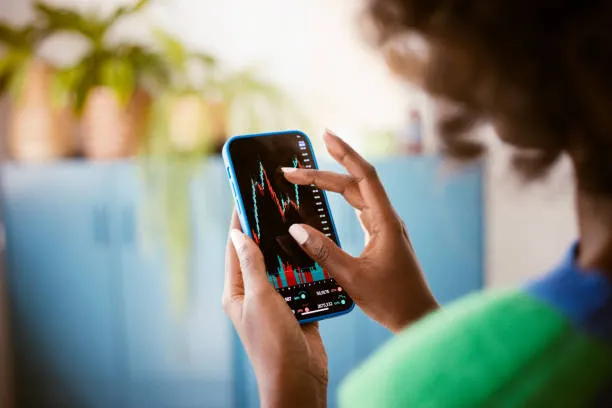When it comes to trading, understanding the spread is crucial. The spread is the difference between the bid and ask price of a security or asset. It is essentially the cost of trading and can have a significant impact on your profits. In this article, we will dive into the details of spread calculation and how it affects your trading.
What is the Spread?
Before we get into the calculation, let’s first define what the spread is. The spread is the difference between the bid and ask price of a security or asset. The bid price is the highest price a buyer is willing to pay for a security, while the ask price is the lowest price a seller is willing to accept. The spread is essentially the cost of trading and is typically expressed in pips, which is the smallest unit of measurement in the forex market.
Why is the Spread Important?
The spread is an essential factor to consider when trading because it directly affects your profits. When you buy a security, you pay the ask price, and when you sell, you receive the bid price. The difference between these two prices is the spread, and it is essentially the cost of trading. The wider the spread, the more you have to pay to enter and exit a trade, which can significantly impact your profits.
How is the Spread Calculated?
The spread is calculated differently depending on the type of security or asset you are trading. Let’s take a look at the three most common types of spread calculations.
Forex Spread Calculation
In the forex market, the spread is typically expressed in pips, which is the smallest unit of measurement. One pip is equal to 0.0001 for most currency pairs, except for the Japanese yen, where one pip is equal to 0.01. The spread is calculated by subtracting the bid price from the ask price. For example, if the bid price for EUR/USD is 1.2000 and the ask price is 1.2002, the spread would be 2 pips.
NY Spread of Hours Calculation
The NY spread of hours calculation is used for trading futures contracts on the New York Mercantile Exchange (NYMEX). The spread is calculated by subtracting the bid price from the ask price and multiplying it by the contract size. For example, if the bid price for a crude oil futures contract is $50 and the ask price is $51, and the contract size is 1000 barrels, the spread would be $1000.
Spark Spread Calculation
The spark spread is used in the energy market to calculate the profitability of a natural gas-fired power plant. It is calculated by subtracting the cost of natural gas from the revenue generated by selling electricity. The formula for spark spread calculation is as follows:
Spark Spread = Electricity Price – (Natural Gas Price x Heat Rate)
The heat rate is the amount of natural gas needed to produce one megawatt-hour of electricity. For example, if the electricity price is $50 per megawatt-hour, the natural gas price is $3 per million BTUs, and the heat rate is 7, the spark spread would be $50 – ($3 x 7) = $29 per megawatt-hour.
Factors Affecting the Spread
The spread is not a fixed number and can vary depending on several factors. Here are some of the main factors that can affect the spread:
Market Volatility
Market volatility refers to the speed and magnitude of price movements in the market. When the market is highly volatile, the spread tends to widen as there is more uncertainty and risk involved in trading.
Liquidity
Liquidity refers to the ease of buying and selling a security or asset. When a market is highly liquid, there are many buyers and sellers, and the spread tends to be lower. On the other hand, when a market is illiquid, the spread can widen as there are fewer buyers and sellers.
Trading Volume
The trading volume refers to the number of shares or contracts being traded in a specific period. When there is high trading volume, the spread tends to be lower as there is more competition among buyers and sellers. On the other hand, when there is low trading volume, the spread can widen as there are fewer buyers and sellers.
Time of Day
The time of day can also affect the spread, especially in the forex market. During peak trading hours, the spread tends to be lower as there is more liquidity and trading volume. However, during off-peak hours, the spread can widen as there are fewer market participants.
How to Minimize the Impact of the Spread
While the spread is an unavoidable cost of trading, there are some strategies you can use to minimize its impact on your profits.
Choose a Broker with Low Spreads
The first step to minimizing the impact of the spread is to choose a broker with low spreads. Different brokers offer different spreads, so it’s essential to do your research and compare before choosing one.
Trade During Peak Hours
As mentioned earlier, the time of day can affect the spread, especially in the forex market. To minimize the impact of the spread, it’s best to trade during peak trading hours when there is more liquidity and trading volume.
Use Limit Orders
Limit orders allow you to set a specific price at which you want to buy or sell a security. By using limit orders, you can avoid paying the spread and potentially get a better price for your trade.
Consider Trading on Margin
Trading on margin allows you to trade with borrowed funds, which can help you increase your trading volume and potentially offset the impact of the spread.
Conclusion
In conclusion, the spread is an essential factor to consider when trading as it directly affects your profits. The spread is calculated differently depending on the type of security or asset you are trading, and it can vary depending on market conditions. By understanding how the spread is calculated and the factors that can affect it, you can make more informed trading decisions and minimize its impact on your profits.





